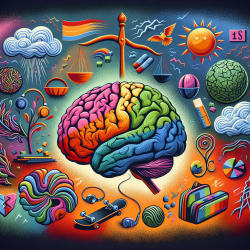Understanding the Impact of Childhood Maltreatment on Adolescent Mental Health
As a Special Education Director, it's crucial to stay informed about the latest research to enhance our understanding and improve our interventions for students. The study titled Childhood Maltreatment and Subsequent Depressive Symptoms: A Prospective Study of the Sequential Mediating Role of Self-Esteem and Internalizing/Externalizing Problems provides valuable insights into the complex relationship between childhood maltreatment (CM) and depressive symptoms in adolescents.
Key Findings of the Study
The research conducted a longitudinal study among 1,957 students in China, revealing that childhood maltreatment is a significant predictor of depressive symptoms. The study identified self-esteem and internalizing/externalizing problems as mediators in this relationship, with notable differences between males and females.
Implementing Research Insights in Practice
Understanding these mediating factors allows practitioners to tailor interventions more effectively. Here are some practical strategies to consider:
- Boost Self-Esteem: Develop programs that focus on building self-esteem, particularly for male students who may be more affected by low self-esteem. Encourage activities that promote self-worth and resilience.
- Address Internalizing Problems: Implement therapeutic approaches that target internalizing problems such as anxiety and depression. Cognitive-behavioral therapy (CBT) can be particularly effective.
- Manage Externalizing Problems: For female students, focus on interventions that address externalizing behaviors like aggression and defiance. Behavioral interventions and social skills training can be beneficial.
- Consider Sex Differences: Tailor interventions to account for sex differences in the mediating pathways. This personalized approach can enhance the effectiveness of the interventions.
Encouraging Further Research
While this study provides valuable insights, it also highlights the need for further research. Encourage collaboration with researchers and consider participating in studies that explore these mediating factors in different populations and settings.
Conclusion
By integrating the findings of this study into practice, practitioners can enhance their ability to support students affected by childhood maltreatment. Understanding the mediating roles of self-esteem and internalizing/externalizing problems allows for more targeted and effective interventions.
To read the original research paper, please follow this link: Childhood maltreatment and subsequent depressive symptoms: a prospective study of the sequential mediating role of self-esteem and internalizing/externalizing problems.










